
When Your Growing Business Hits Airtable's 50,000 Record Wall
September 26, 2025 • 6 min read
Typeform has perfected the art of beautiful, engaging data collection; its one-question-at-a-time interface is a masterclass in user experience.
But for the creators and stakeholders behind the form, this elegance comes at a cost.
When it's time to review, collaborate on, or even migrate your form, you'll quickly discover a frustrating truth: getting a simple, comprehensive view of your form's structure is surprisingly difficult.
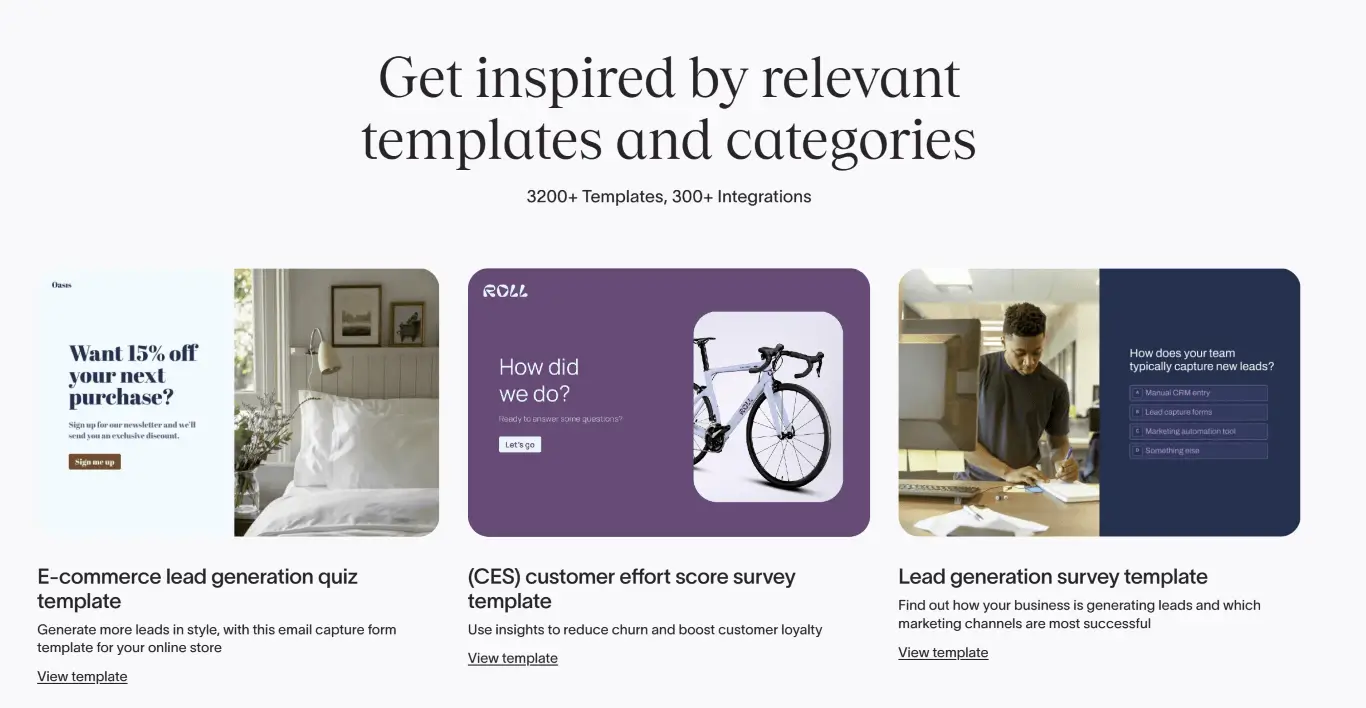
Typeform's library of form templates
While exporting submission data is straightforward, Typeform offers no simple way to export a blank form's schema - the very blueprint of your questions, question types, and conditional logic.
This limitation turns your carefully crafted form into a black box, accessible only through its public-facing interface or a complex API.
Not being able to extract your form's structure and logic isn't a niche problem; it's a significant bottleneck for any serious enterprise user. Imagine these common scenarios.
In each case, the inability to easily view the form's "blank" structure creates friction, slows down processes, and introduces risk.
So, how do you get your form's schema out of Typeform? The native options are less than ideal for the average business user.
For those with technical expertise, Typeform's API offers a solution.
By using the GET /forms/:formId endpoint, a developer can retrieve a JSON object containing the entire form schema.
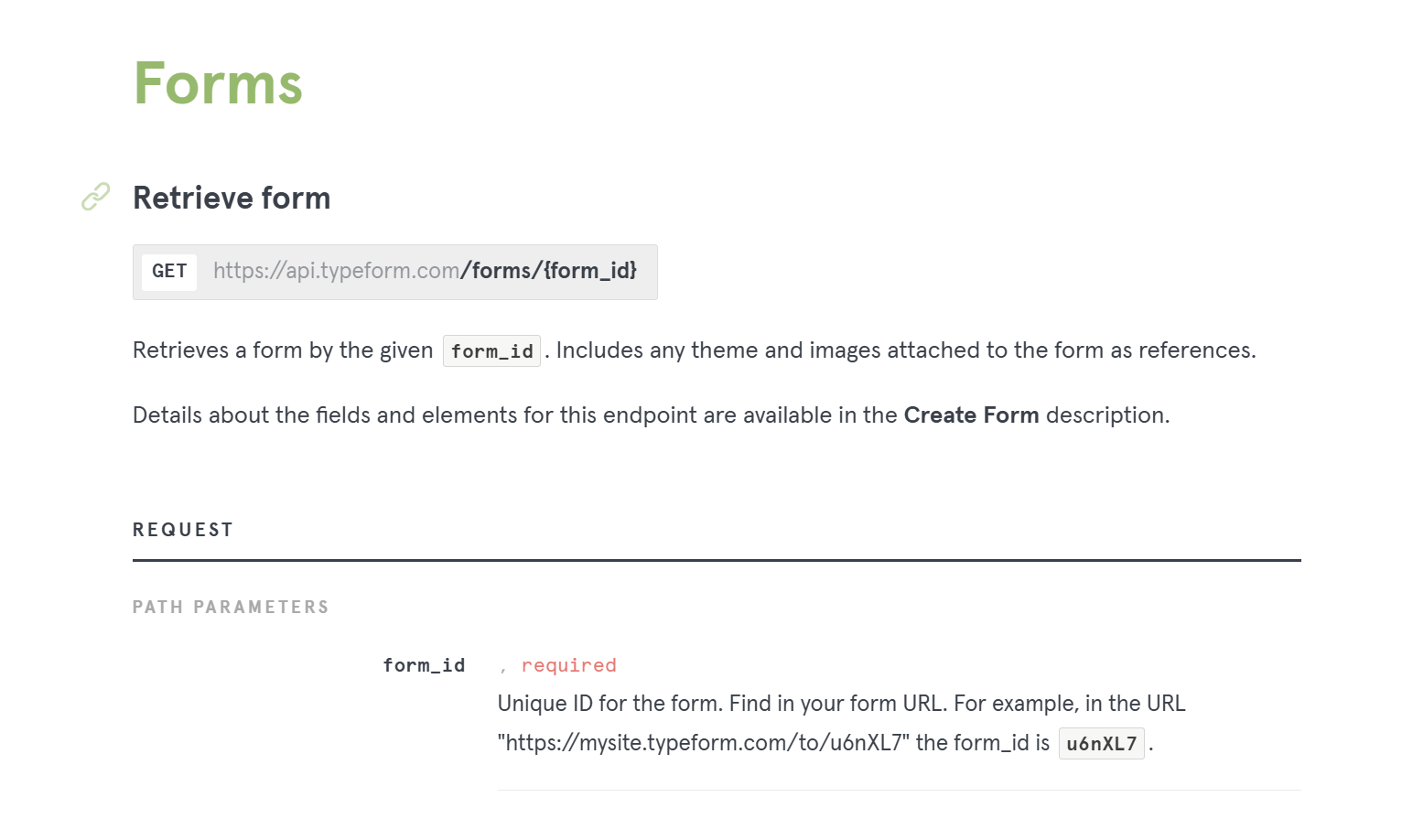
Typeform's API endpoint for extracting form schema
However, this JSON output is notoriously complex and verbose; it's designed for machines, not for a quick human review. It requires programming knowledge to authenticate, make the request, and then parse the dense output into something readable.
Integration platforms like Make and Zapier can simplify the process slightly. These tools abstract the authentication and provide a visual interface for making a custom HTTP call to the same Typeform API endpoint.
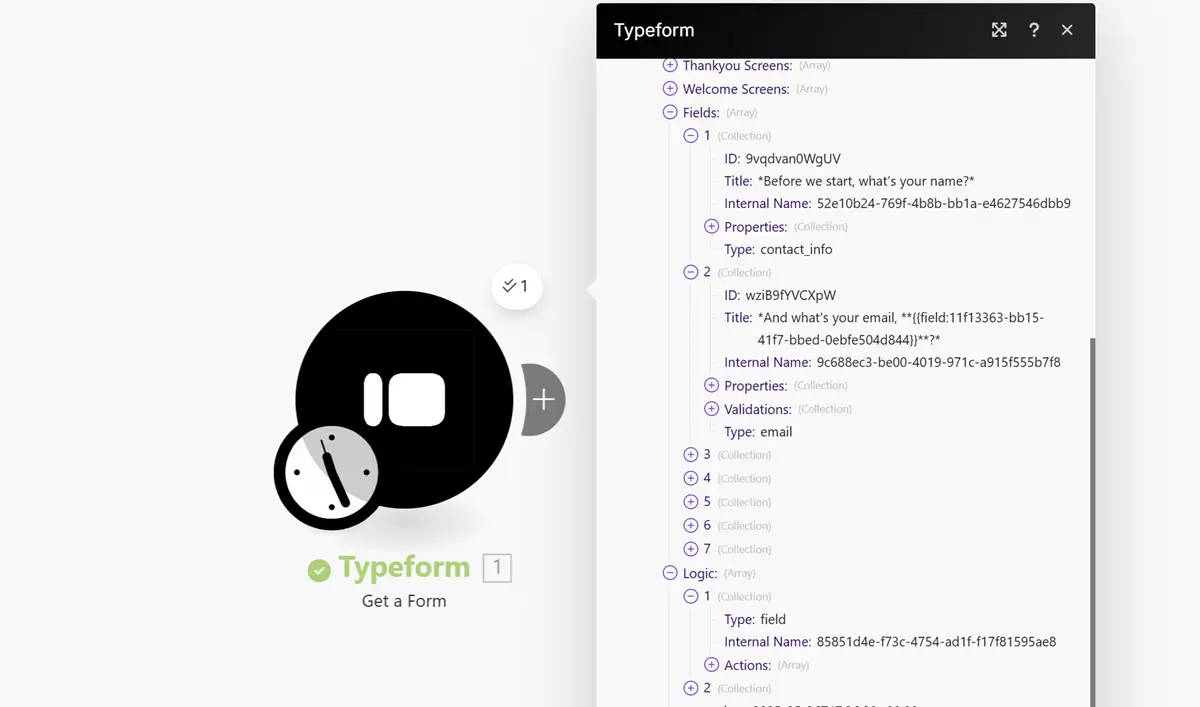
Output of Typeform's "Get a Form" module in Make
While this removes the need to write code, it still leaves you with the same convoluted JSON data.
You've simply changed how you get the data, not the unsuitability of the data itself for review or documentation purposes.
For most teams, these "solutions" are just different flavors of a technical headache. They don't solve the core problem: the need for a simple, human-readable export of the form's structure.
While the API and iPaaS platforms provide access to the data, they still leave you with the task of interpreting and formatting it.
A more direct approach is a tool specifically designed for this purpose - one that handles both the data extraction and the final presentation.
To address this need ourselves, we built Koppie. It's a free utility designed to export a Typeform schema and present it in multiple, beautifully formatted outputs tailored for different needs:
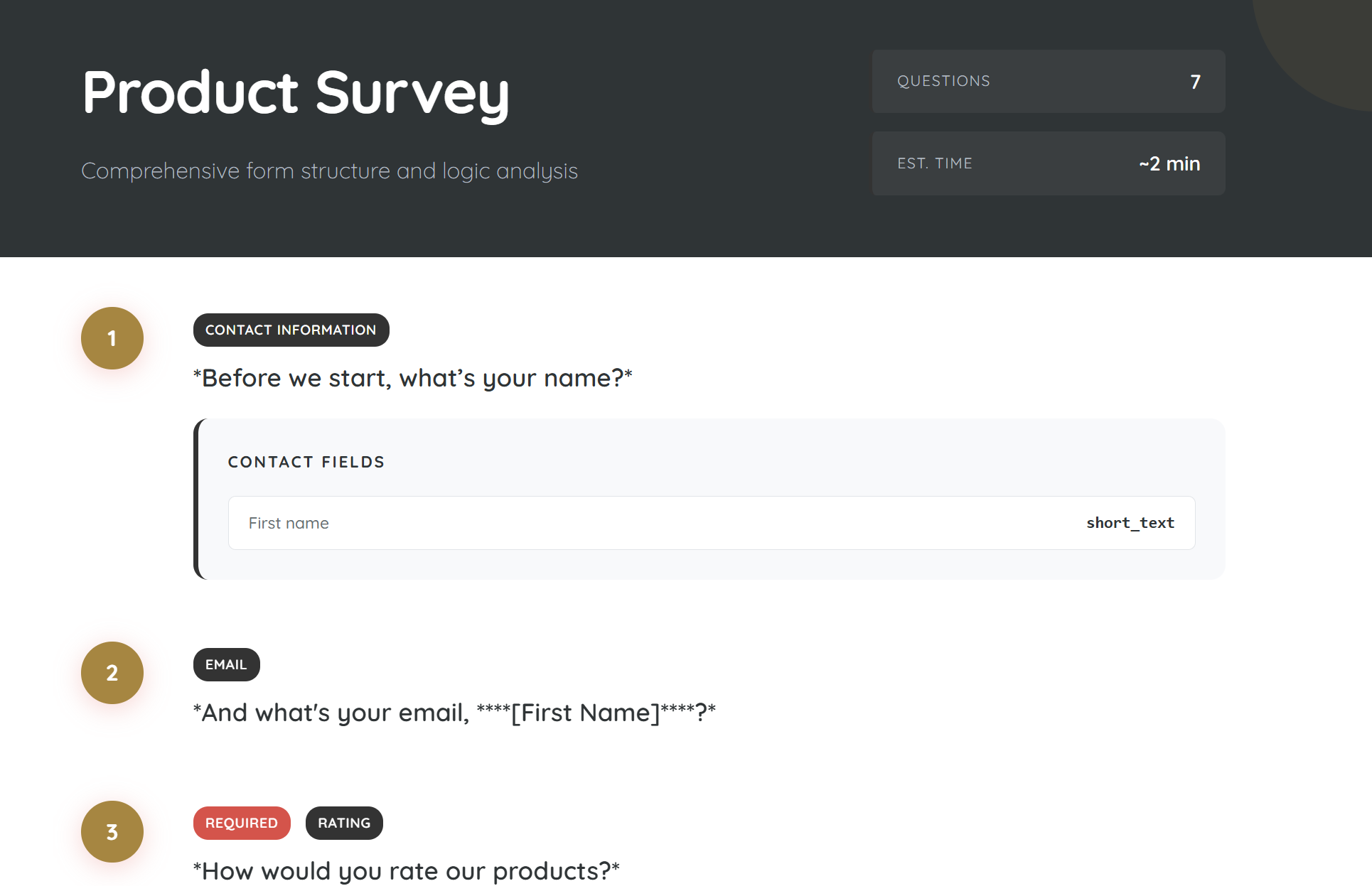
Typeform schema exported as a custom HTML page
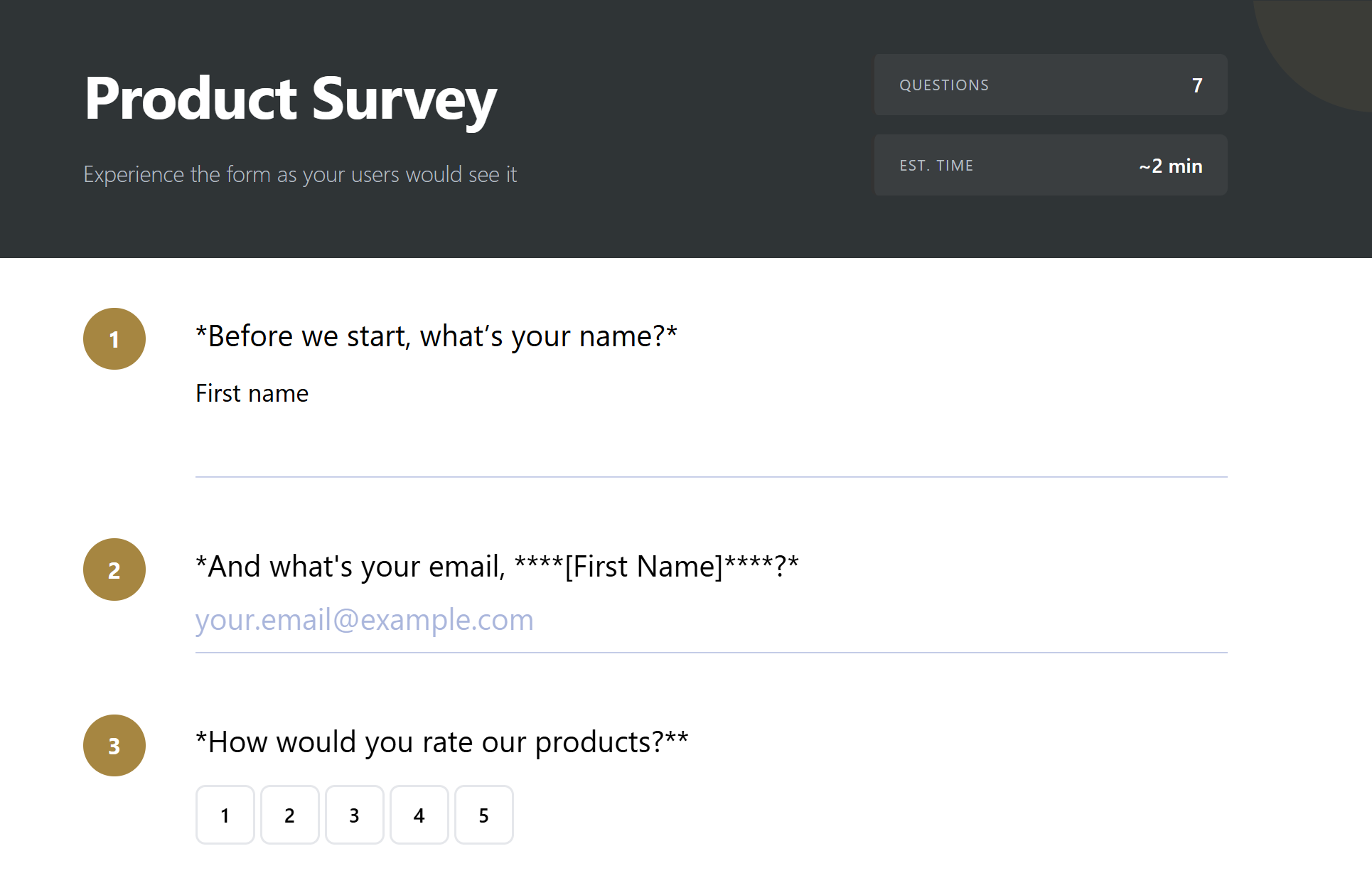
Typeform schema exported as an interactive HTML form
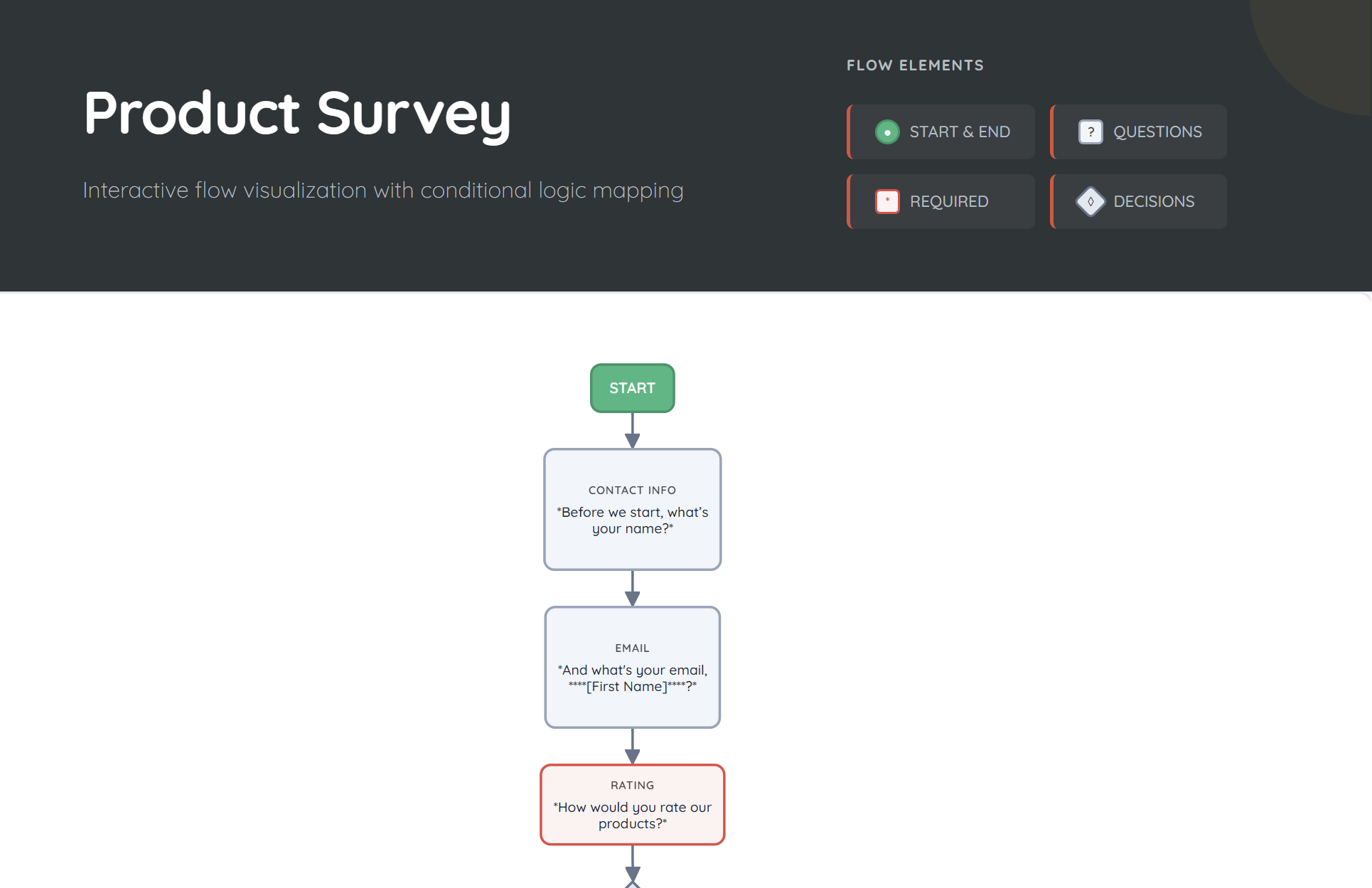
Typeform conditional logic exported as a flow chart
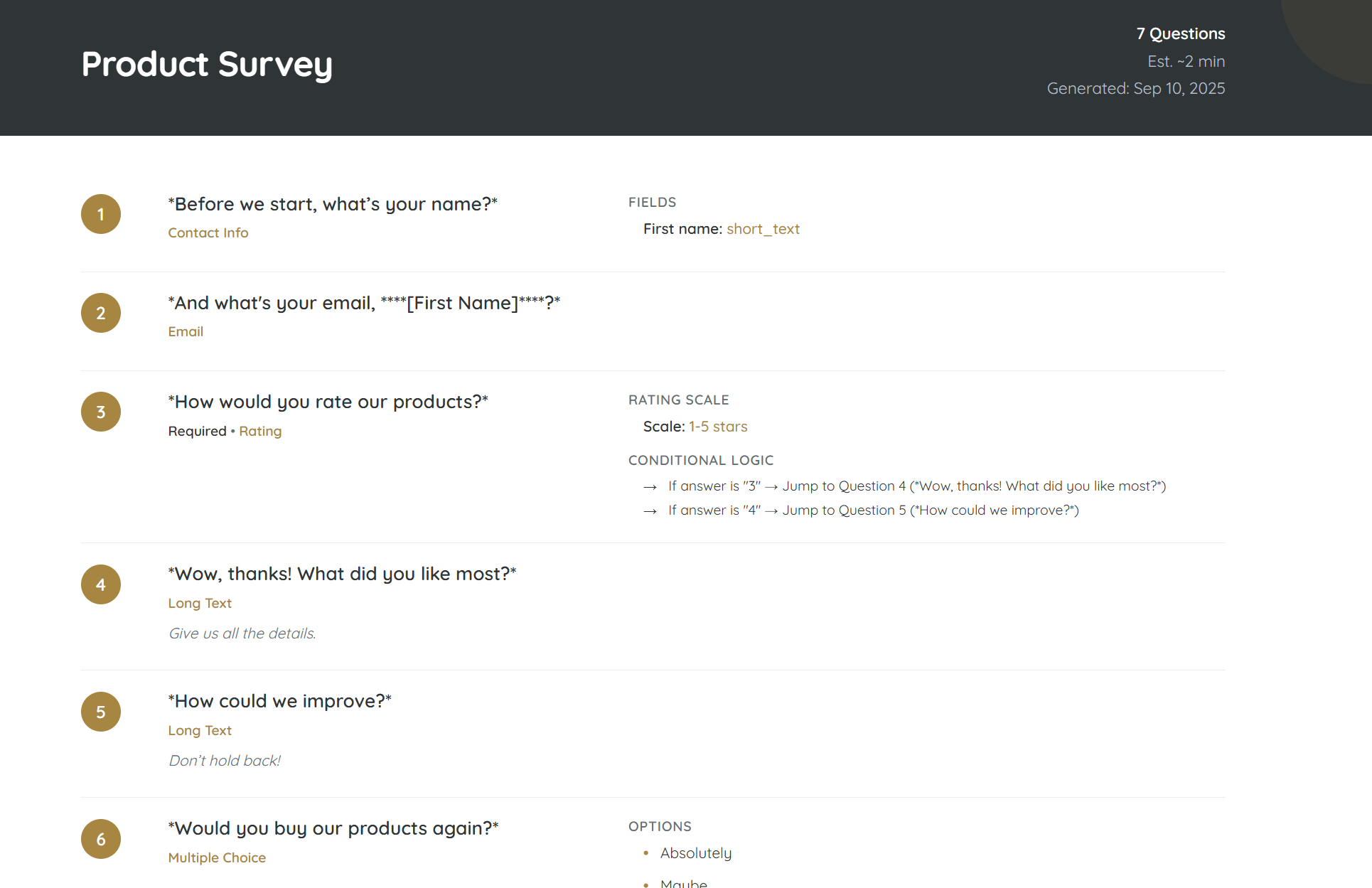
Typeform schema exported as a compact, printable HTML
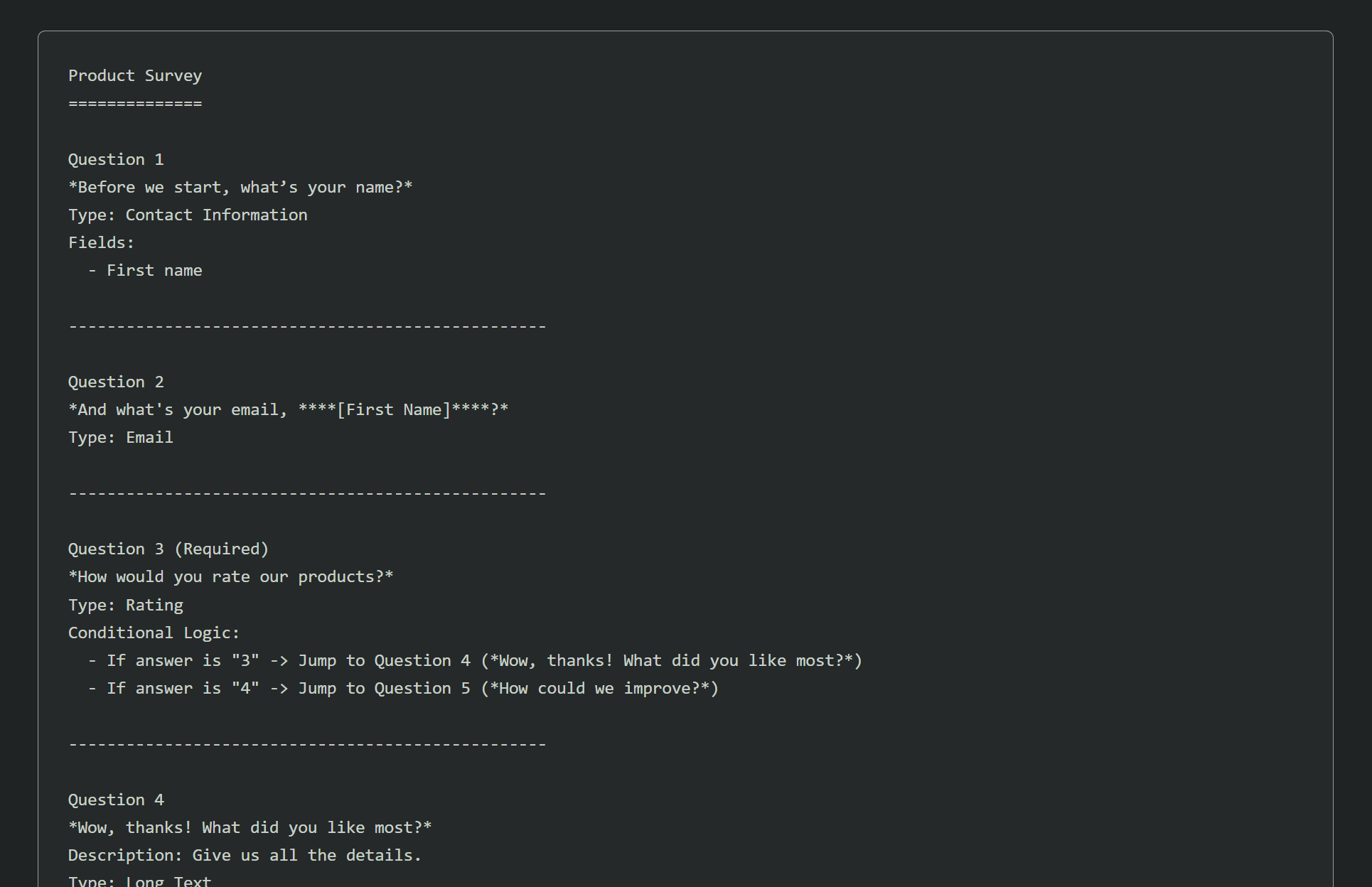
Typeform schema exported as plain text
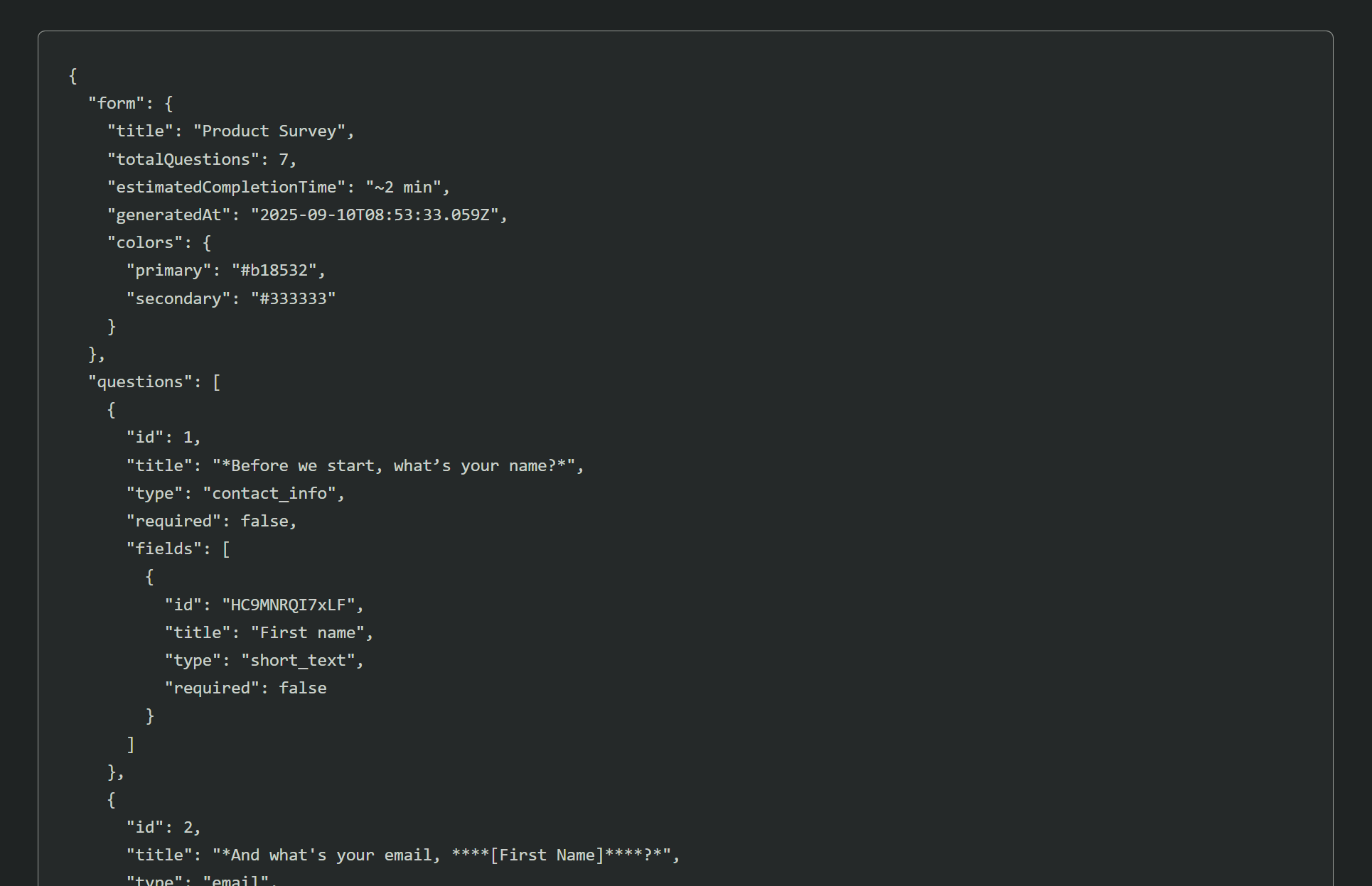
Typeform schema exported as a custom JSON schema
For teams looking to integrate this functionality into their automated workflows, the capability is available natively in Make.
Our "Servalian Tools" app includes a dedicated module for Koppie, which enables people to include the functionality of Koppie in their workflows instead of having to go through our website.
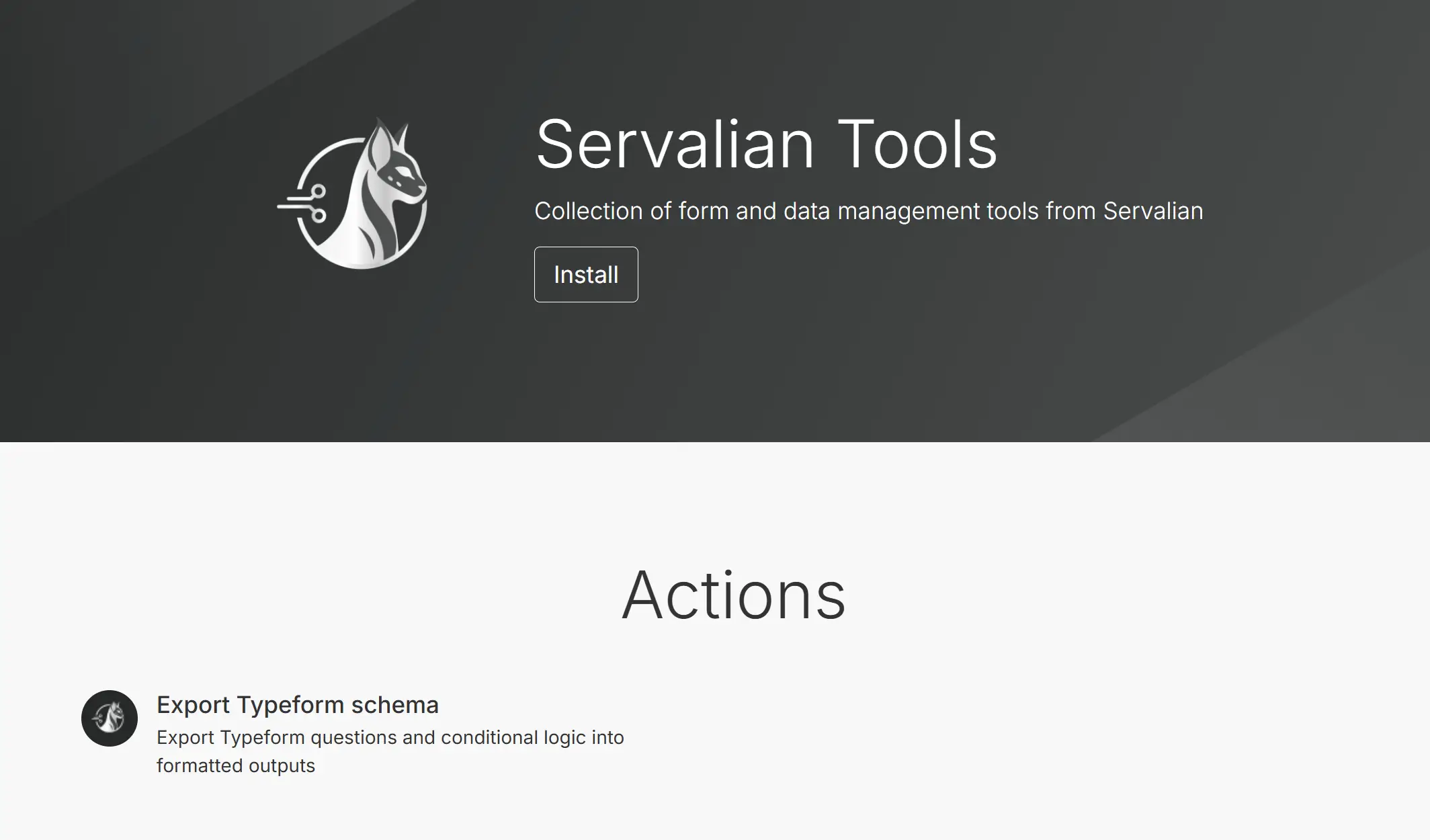
"Servalian Tools" custom app in Make
This allows you to build powerful automations, such as a daily workflow that automatically finds recently updated Typeforms, exports their schemas via Koppie, and saves the various output formats to a shared Google Drive folder. It's documentation on autopilot, really.
Ultimately, a form's structure is a valuable piece of intellectual property; it represents a carefully designed process.
Ensuring you have clear visibility into that structure isn't just about convenience - it's about better governance, smoother collaboration, and maintaining control over your own workflows.
The tools you choose should empower that clarity, not create obstacles.
Subscribe to our newsletter to receive the latest news from SaaS, tips, tricks and insights directly to your inbox.
